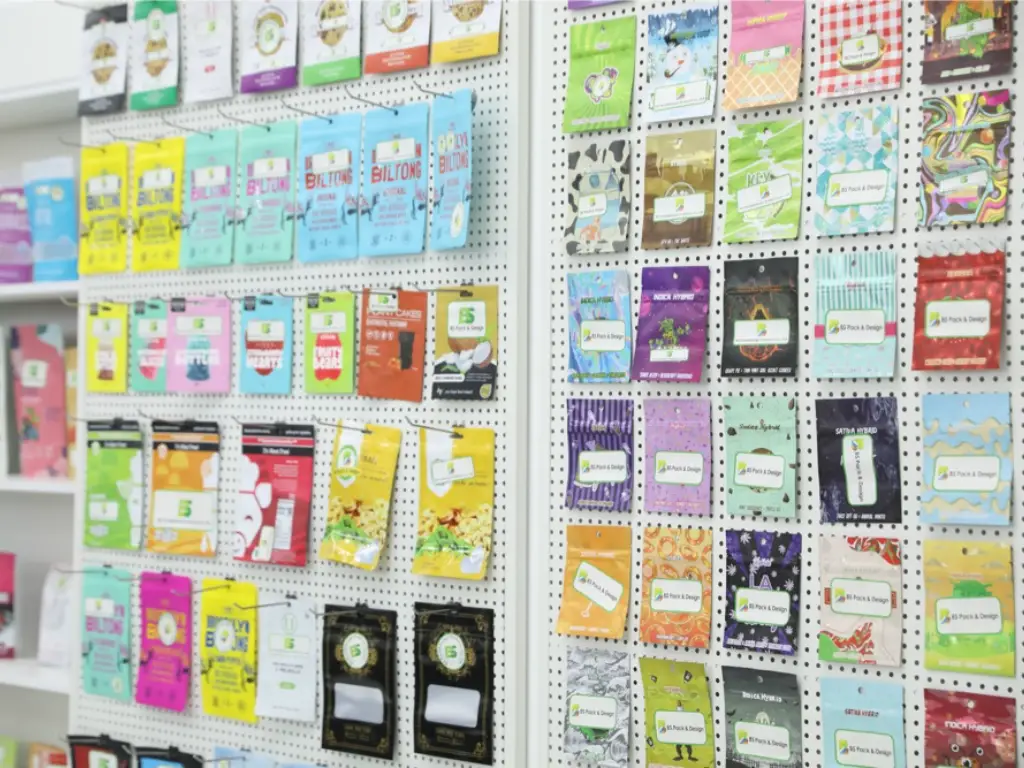Introduction: Why Choosing the Right Pouch Type Matters
Have you ever been in front of a shelf in the store, not knowing what to take, and packaging probably contributed a lot to your choice? The kind of pouch packaging you employ in the current competitive market can determine the way your product is perceived. Whether it is the packaging of snack items, liquid products, or pet food, the correct format impacts the freshness to branding.
And you are wondering: a pouch is a pouch, isn’t it? Not exactly. The varieties of pouches which are used today are as many as the products they are intended to carry. Not all pouches do the same. A misplaced decision may influence shelf life, jeopardize product integrity, or not live up to sustainability standards.
This guide will take you through the key categories of pouch packaging, their advantages and disadvantages, as well as how to select one that meets your product specifications, operational needs, and customer expectations. And yes, the choice of pouch you use does more than merely determine the visual appeal of your brand; it also determines performance, cost-effectiveness, and the environmental impact of your brand.
What Is Pouch Packaging?
Pouch packaging is a type of flexible packaging that is gaining momentum to substitute the more traditional metal cans and rigid packaging across industries, including the food industry, beauty products, and pharmaceutical products. Put simply, it is a lightweight, flexible material, usually composed of plastic films, metal foil, or kraft paper, that is used to contain, protect, and display a wide variety of products.
Among the primary factors that have made pouch packaging rocket to the top of popularity, it is possible to note that it is a hybrid of protection, aesthetics, and convenience. These heat-sealed flexible packaging pouches can be resealable to ensure repeat use, can be customized to allow a unique brand identity, and are secure. Pouches take up less space and have lower shipping costs than rigid containers, and they also result in a smaller carbon footprint for you.
The modern market has a wide range of flexible packaging pouches applicable to a particular type of product. Whether it be liquid packaging to dry products such as pet food, there is a pouch to suit most requirements. And when we go further into the specifics of pouch packaging, you will understand why it is the right choice in many cases for both manufacturers and consumers.
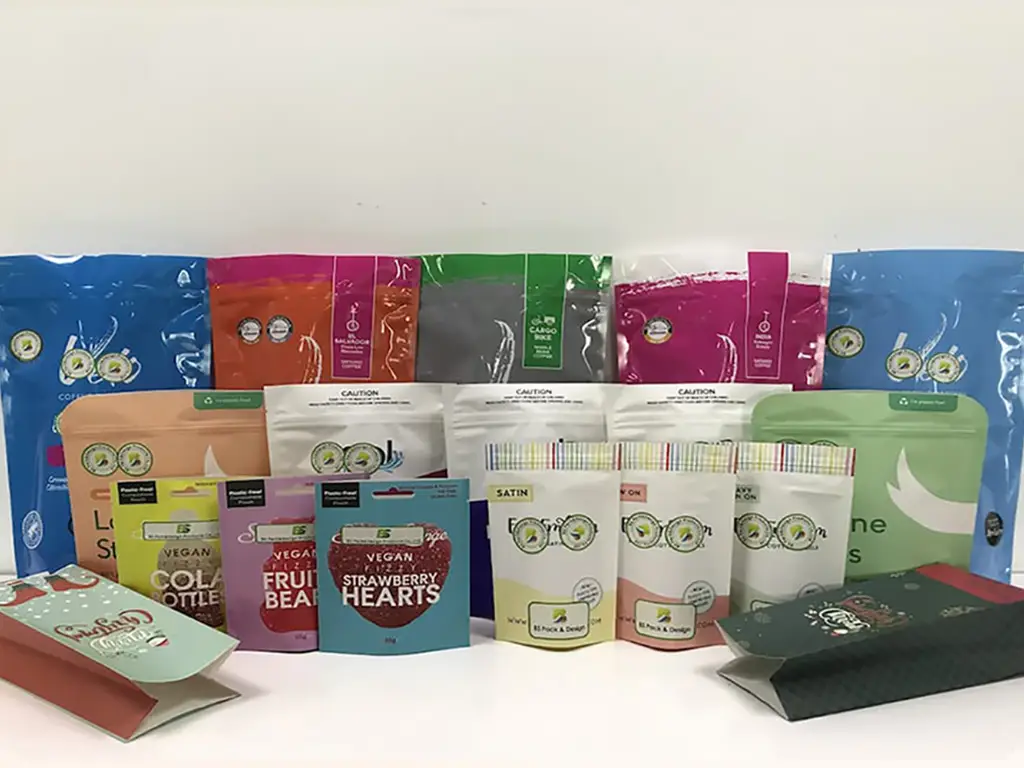
Key Benefits of Using Pouch Packaging
The popularity of flexible pouch packaging across various industries is constantly growing because of its convenience, affordability, and sustainability-related attributes. The five main benefits that would make it a better option than the traditional formats are listed below.
- ● Portability and Ease of Use
Pouches are portable, small, and can be opened or resealed easily. User convenience formats such as zipper pouches and spout pouches are more convenient, especially when handling products that are consumed out of the house or on small shelves. Their design allows easy handling without a mess and enhanced access to the products.
- ● Shelf Life and Product Protection
Barriers and advanced sealing technologies ensure that contents are not affected by moisture, oxygen, and light through multi-layer barriers. Vacuum and retort pouches are perfect to use with perishable or delicate goods where there is a longer shelf life, but no reduction in the quality of the product.
- ● Branding Flexibility
Pouches provide a large surface area to show high-impact graphics and custom design. Shape pouches, transparent windows, as well as functional closures, are some of the options that increase shelf appeal and brand recognition in various market segments.
- ● Cost and Storage Efficiency
Pouches are cost-effective to manufacture and deliver as opposed to rigid packaging. They are flexible and save space when transported or stored, and cause less damage to the product and less wastage on the packaging.
- ● Sustainability
Contemporary pouch formats are made of less material and with recyclable or compostable films. The resealable characteristics minimize single-use waste, and it is a good option for brands that are environmentally concerned.
Common Types of Pouches and Their Best Use Cases
When it comes to the world of flexible packaging, it is crucial to comprehend the advantages and applications of the types of pouches to make informed decisions. The format that you select, whether you are launching a new product or trying to optimize your current packaging, can influence everything in terms of shelf appeal, logistics, and sustainability.
The following is a detailed description of the most widely used types of pouches currently offered in the market today, each of which has peculiarities of the structure, functional advantages, and suitable purposes. Whether it is food and beverage, pharmaceutical, or personal care, there is a pouch type that fits the vast majority of the packaging requirements.
Stand Up Pouches
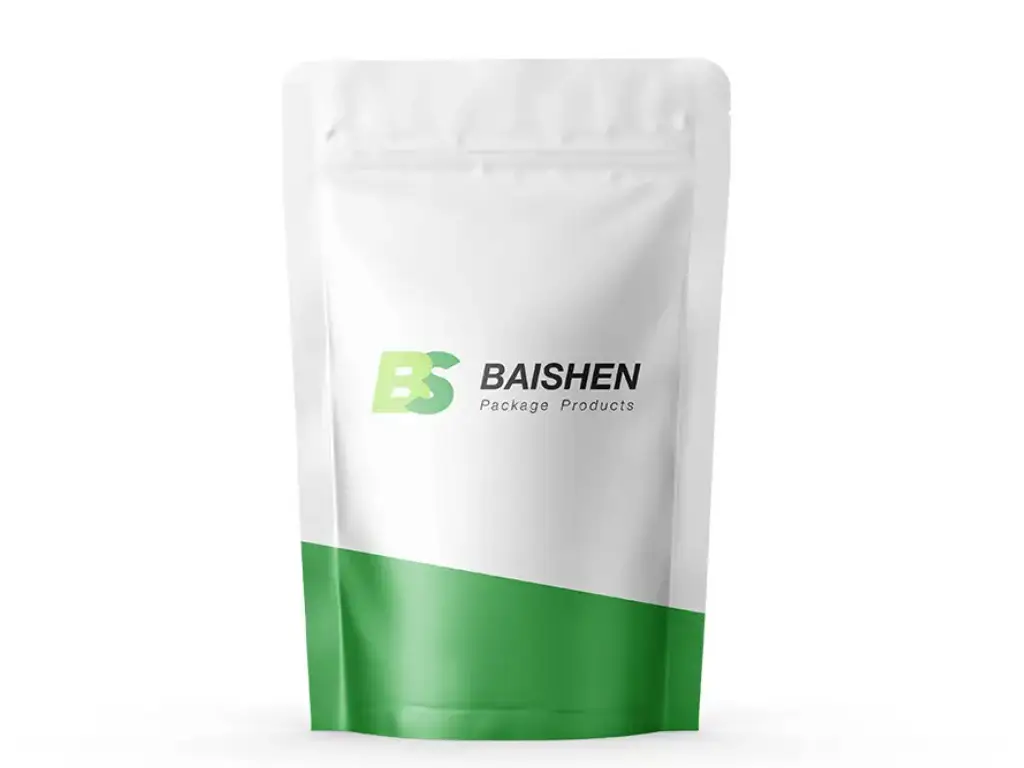
One of the most versatile and attention-catching formats of flexible packaging of the present day is called stand-up pouches. Their bottom gusset is expandable so that you can fill them and stand them up, which makes them the popular option to accommodate a variety of different products, including dry snacks, health supplements, sauces, and beverages. Brands have a visual advantage because their shelf-ready stance will attract attention in a retail setting.
The major strength of this design is functionality. Stand-up pouches are great to display high-impact graphics, product information, and branding on the front-facing space. They are also compatible with additional features such as a resealable zipper or spout, increasing the convenience of products that a person is supposed to consume over a period, such as coffee, nuts, or juice. They are highly flexible in the material they use, ranging from high-barrier films and metal foils to kraft paper, which allows them to match anything, including luxury branding, as well as eco-friendly messages.
In addition to their beauty and convenience, stand-up pouches provide logistical benefits. Their compact size and low weight ensure low shipping expenses and storage needs, and also give good protection, which prolongs shelf life. Stand-up pouches remain an elite choice of packaging solution, especially in the case of brands that want to find a smart compromise between presentation, functionality, and sustainability.
Side Gusseted Pouches
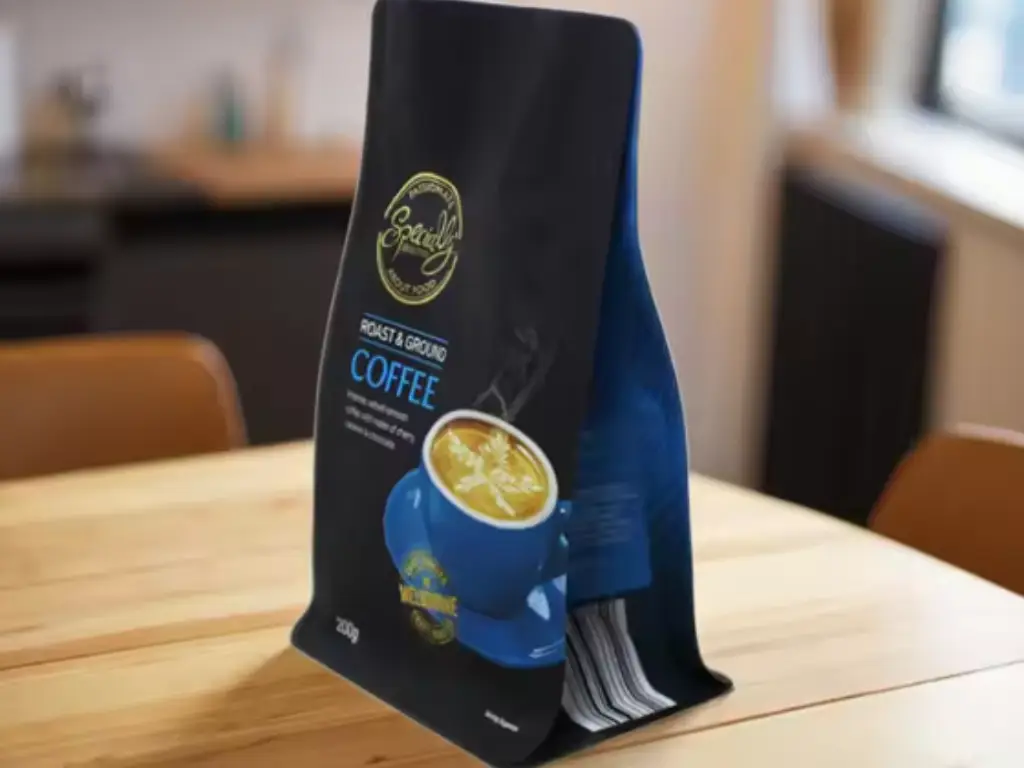
Side gusseted pouches are best suited when you need to fill more volume, yet not to have less shelf space, and still look good. These pouches can be designed with expandable side panels, which are frequently used with coffee, pet food, powdered mixes, and other bulk products where size and space are a concern. They are erect when filled and sealed (particularly with a bottom seal) and provide a cost-effective alternative to flat bottom pouches that is nonetheless stable.
The pouches are manufactured using various materials such as plastic films, metal foil, or kraft paper, and most of them are accompanied by heat sealing, zippers, or tear notches to enhance convenience and prolong product freshness. Their design is very appropriate in maintaining sensitive contents such as food or pharmaceutical products, and is easy to handle by consumers.
Side gusseted pouches are also dazzling in terms of branding and logistics. They offer large print spaces on the front, back, and side panels, which are perfect to use when marketing, for multilingual information, or compliance information. They are small in size and can be easily packed and shipped, thus minimizing the cost of transportation and environmental degradation, and hence they are one of the most viable options when it comes to medium- to high-volume packaging requirements.
Flat Bottom Pouches
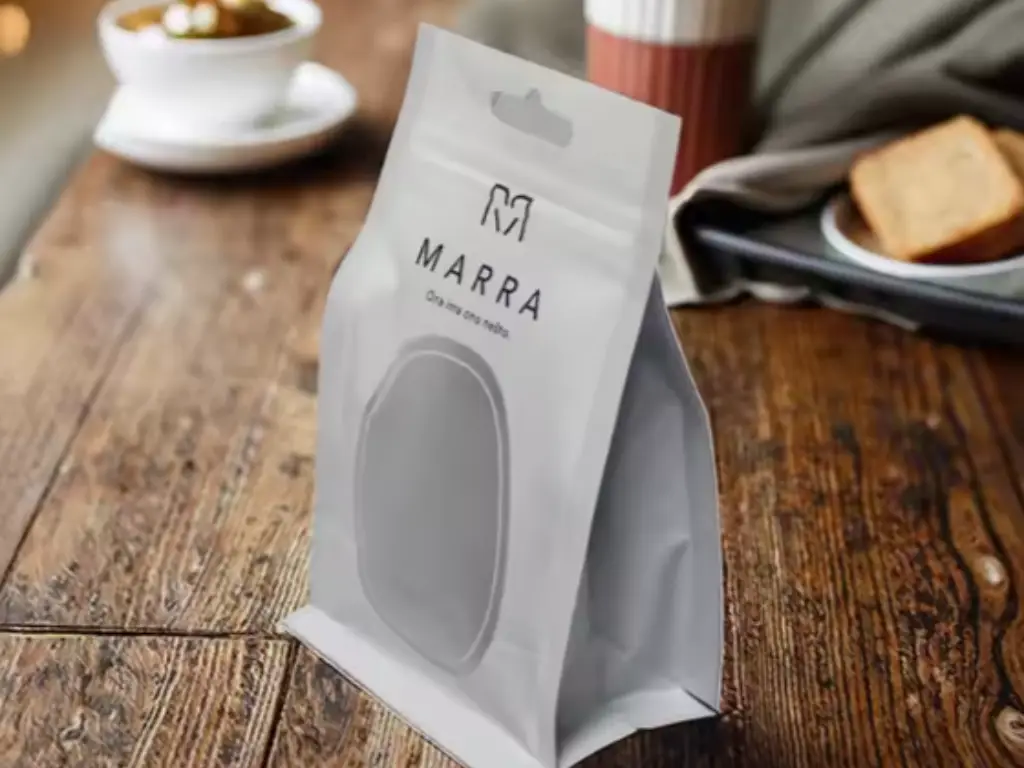
Flat bottom pouches offer the stability of stand-up pouches, the space-saving of side gussets, and the shelf appeal of box-shaped formats. They have a tall and sturdy structure and are mostly used in coffee, granola, and pet food, among other high-value foodstuffs, where both presentation and performance are important.
They are functional in that they accommodate resealable zippers, spouts, or zipper locks, and the five-panel surface provides a lot of space to print branding and messaging. Their flat bottoms increase their stackability and transportability and are therefore suitable both in terms of retail exposure and logistics effectiveness.
These pouches are manufactured using high-barrier plastic films, metal foil, or laminated kraft paper and are used to preserve the contents and attract environmentally friendly consumers. Although they are more expensive than simple pouch types, they also have a high-end appearance and functionality, which makes them a good investment in high-end product lines that want to differentiate themselves on the shelf.
Spouted Pouches
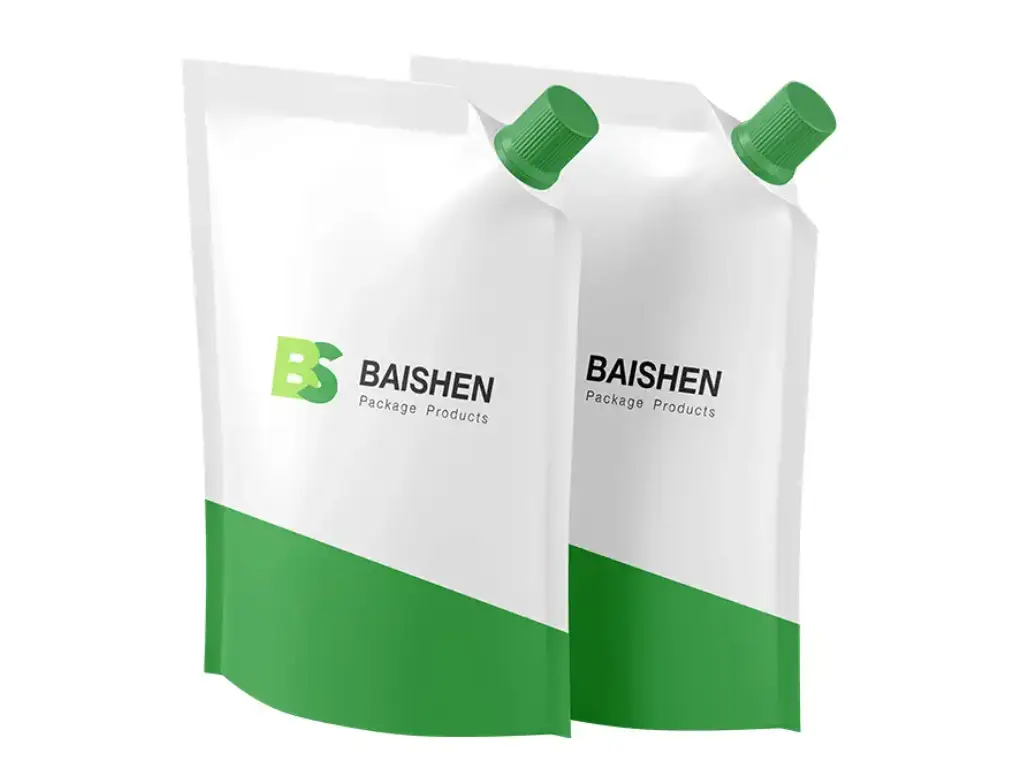
Spouted pouches are the preferred packaging solution when it comes to liquids, semi-liquids, or pourable products, as it is a lightweight, space-saving alternative to rigid bottles or jars. They are typically found on products such as baby food, sauces, energy drinks, or shampoos and contain an inbuilt spout enabling the product to be poured in controlled amounts, easily re-sealable, and help reduce product wastage.
Spout pouches are designed with high-barrier films and heat-sealed packaging, which preserves the contents against oxygen, moisture, and light and guarantees a long shelf life and product integrity. When combined with resealable caps or zippers, they are more convenient to use, fresher, and provide convenient on-the-go usage, which consumers value.
In addition to being functional, these pouches also facilitate good branding and sustainability objectives. They take up less storage and transportation space, use less material, and can be printed in custom designs on plastic, foil, or kraft laminates. Spouted pouches are a convenient, contemporary choice of packaging, whether it is singles or family size packs of food, beauty, or cleaning products.
Vacuum Pouches
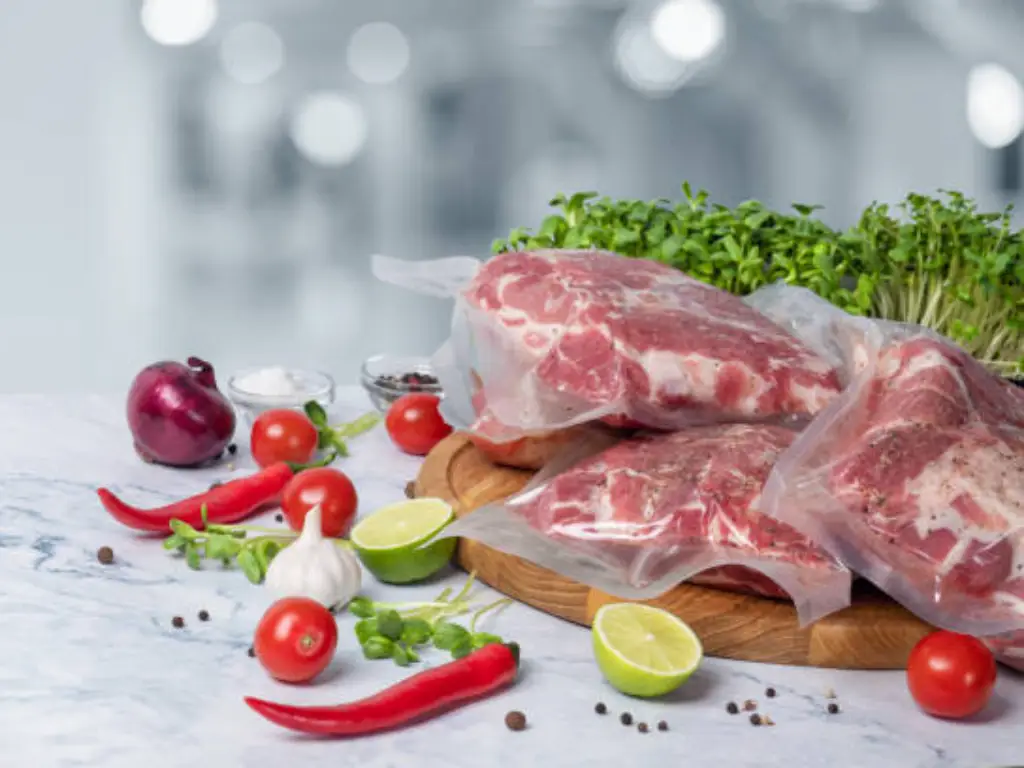
Vacuum pouches are made to be preserved to the maximum. The elimination of air and subsequent sealing highly reduces oxidation and microbial growth and thus increases shelf life and quality of the product. This qualifies them well to carry perishable products such as deli meats, cheeses, seafood, as well as non-food applications such as medical devices, pharmaceuticals, and electronics.
The vacuum pouches are made of high-barrier films or multilayer laminates and thus have high puncture resistance and durability. They are wound in different ways: flat to compact objects or gusseted to bulkier ones, but they have one common advantage: airtight sealing, which resists oxygen, moisture, and contamination.
Vacuum pouches help in sustainability by preventing waste and spoilage, although they are not usually recyclable as they are made of complex materials. They maximize space and cold chain in logistics. Vacuum pouches are also one of the most dependable packaging solutions for products whose freshness and integrity cannot be compromised.
Pillow Pouches
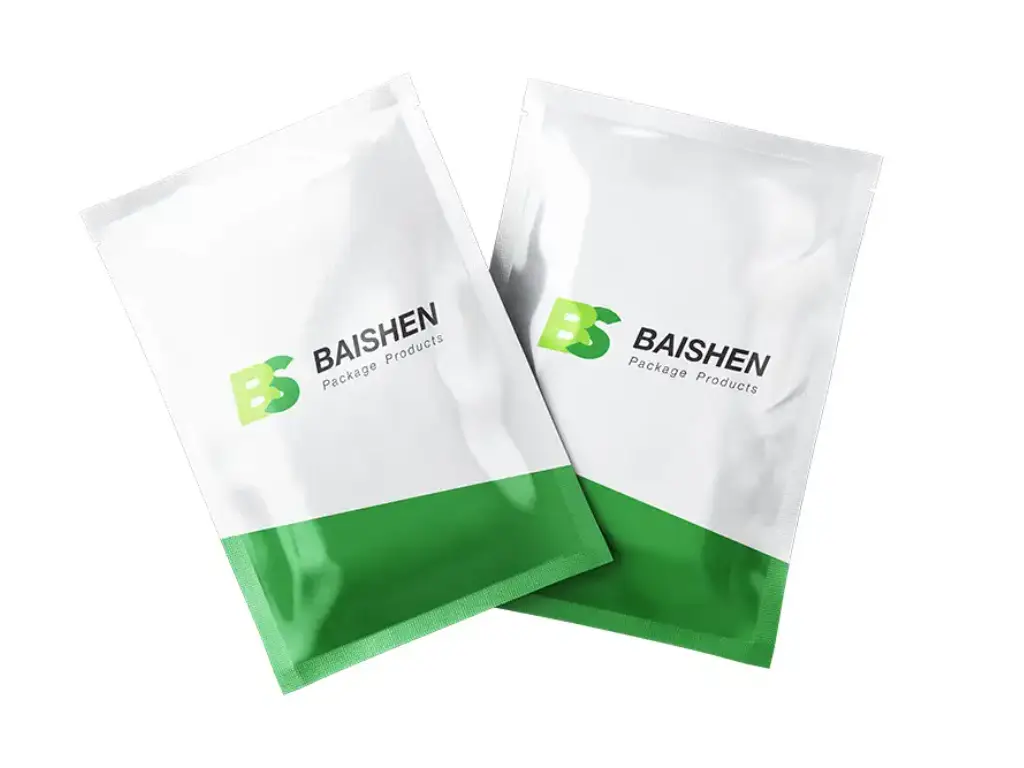
Pillow pouches represent one of the most popular flexible packaging formats that are simple, efficient, and cost-effective. They are also closed by the top-bottom seal and center back seal, and when filled in, they appear as a pillow-shaped bag, which is suitable to store snacks, sachets, powders, and single-use products.
The manufacturers prefer the use of pillow pouches due to their speed of production and low consumption of materials. They facilitate a continuous operation of the form fill seal process, which lowers costs of production and transportation costs. Although they are not usually resealable, they are usually scored in tear notches or laser scored to be opened easily and used once.
They are also flexible in material. Pillow pouches can be made using high-barrier films, foil laminates, or kraft paper, depending on the requirements of the product. With sustainability in mind, recyclable mono-materials become increasingly popular among brands, and pillow pouches are not only a convenient but also a visionary packaging option.
Three Side Seal Pouches
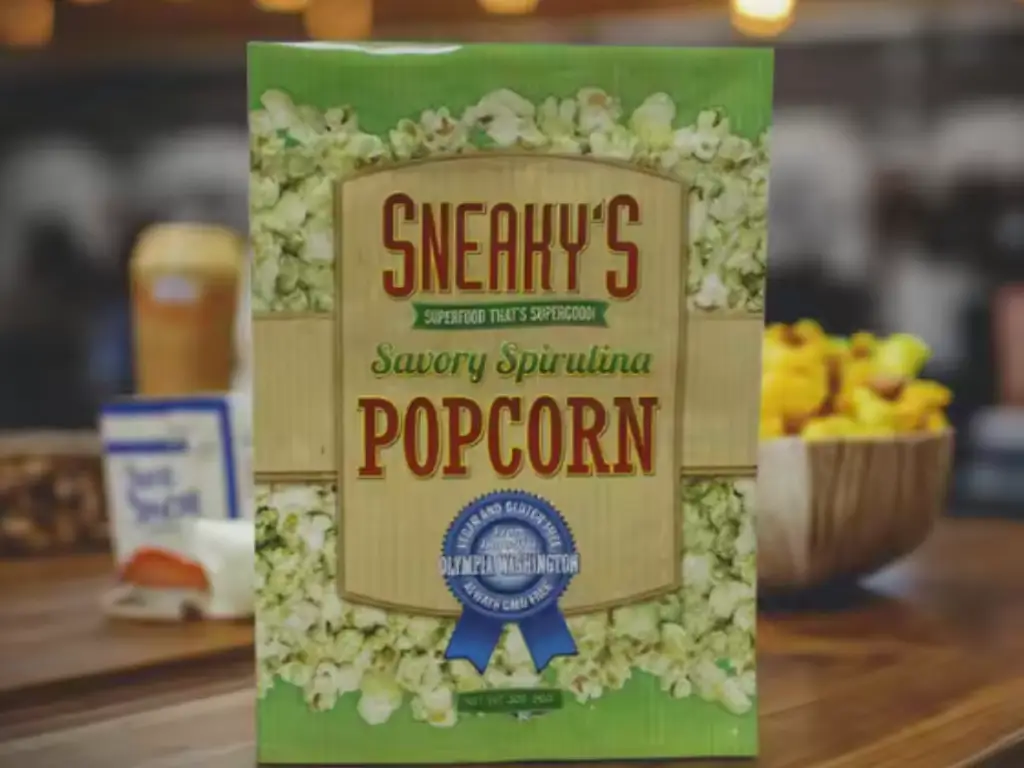
Three-sided seal pouches are a simple but very effective flexible packaging style. They are sealed on all three sides with an open one to fill and offer a tamper-evident and secure seal, perfect to use with food, beauty, pharmaceutical, and single-serve items.
They are also cost-effective and more environmentally friendly than bulkier products since they are shaped as a flat, compact form, which minimizes the use of materials and volume during shipping. These pouches, even though simple, can be made using high-barrier films, foil laminates, or kraft paper to make them moisture, light, and oxygen-proof.
There is a lot of space on the front and back panel to label brands, and tear notches or zippers that can be resealed are optional to make the product easier to use. Three side seal pouches are an effective, expandable solution to a wide variety of industries that need flexible, space-saving packaging, especially since they are at a low price point and are compatible with high-speed filling.
Quad Seal Pouches
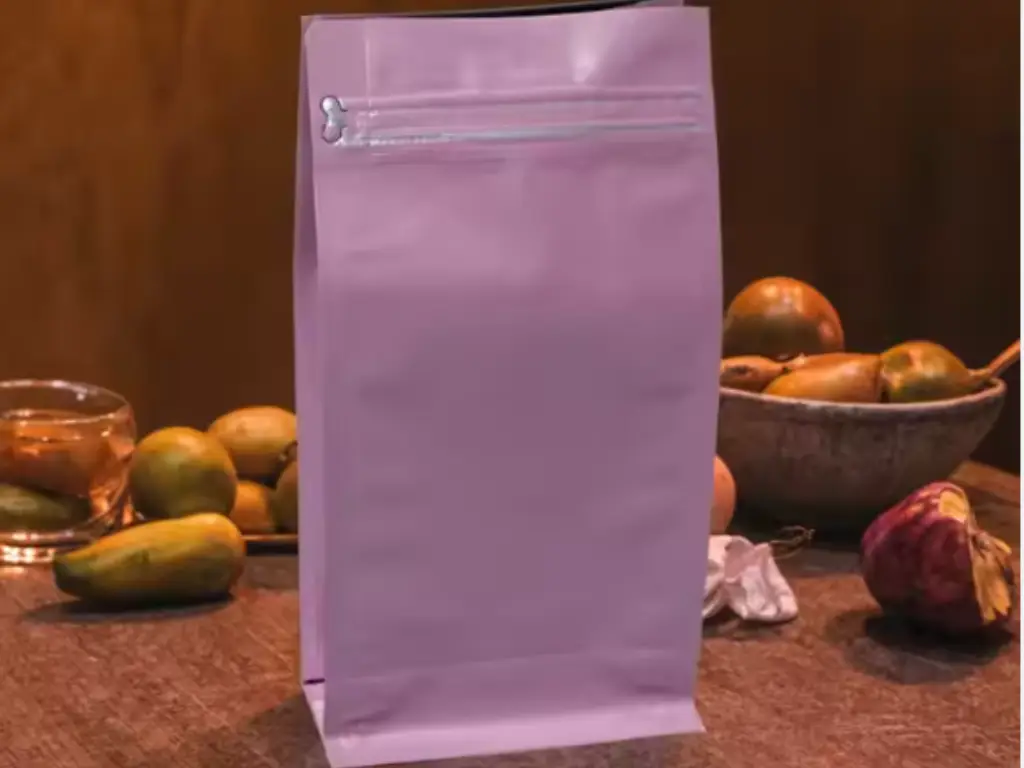
Quad seal pouches have seals on four vertical sides, making them look like a box with high shelf stability and a high-end appearance. The structure is perfect for heavy or high-volume goods such as pet food, coffee, and bulk snacks because it spreads the weight evenly and does not deform during storage and transport.
These pouches are also very strong in terms of protection against punctures and contamination, which extends the shelf life of products. They are also durable, and their stiff nature allows them to have resealable characteristics, such as a zipper closure, making them very convenient.
Brand-wise, quad seal pouches have 5 printable sides: the front, back, two sides, and back seal, which makes the most of the design. They can be made out of many different materials, such as high-barrier films and kraft paper laminates, and thus fit many visual and sustainability requirements. Quad seal pouches are a robust packaging option for brands that want the perfect combination of structure, protection, and design flexibility.
Back Seal Pouches
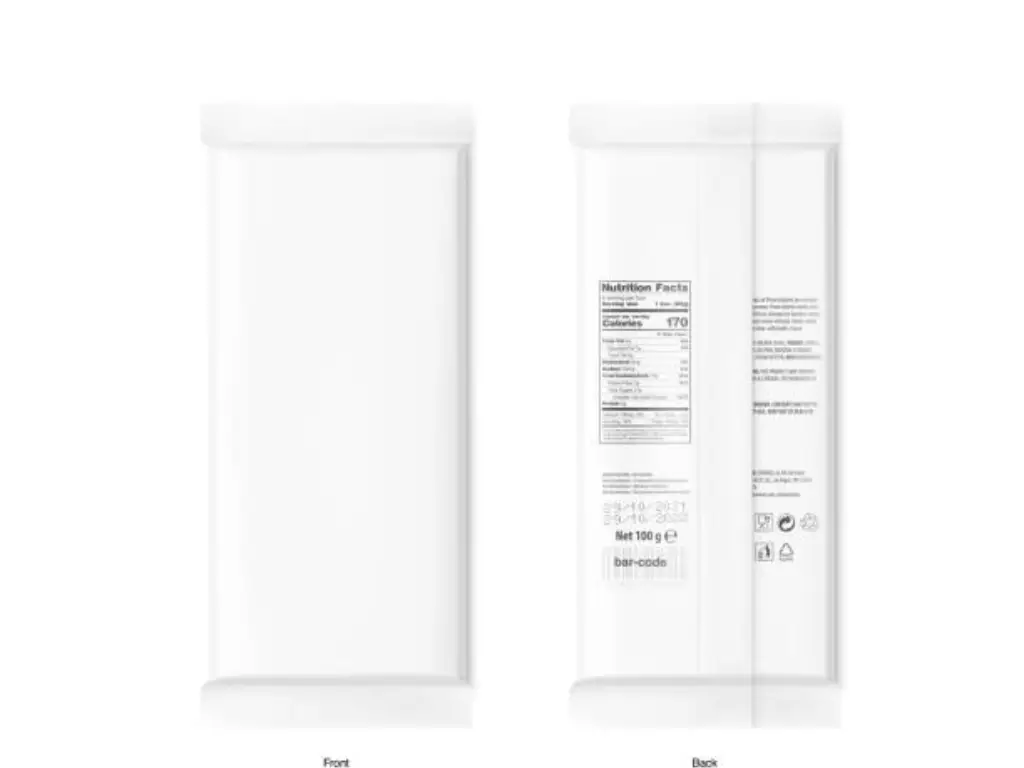
Back seal pouches (or center seal pouches) have a vertical seal in the back, and the front panel is smooth and suitable to be use with clear branding. The design is common in different industries where products such as instant coffee, snack foods, powdered drinks, and pharmaceutical sachets are packaged.
The format provides good material efficiency and efficient production, and is particularly suited to single-serve or controlled portion packaging. Tear notches, or V-notches, may be incorporated to enhance the convenience of use and may be added depending on the application without affecting shelf life or any other aspect of product integrity.
Very flexible, center seal pouches can be used with many different materials, including simple plastic films and high-barrier laminates. Although the text space is a bit limited on the rear, the counterfeit is a clean, retail-friendly front and scalable, cost-effective production. This type of pouch presents a good combination of performance, presentation, and affordability to many brands.
Shape-Cut Pouches
Shape-cut pouches are bendable packages that do not adhere to the conventional rectangular packages. Custom die-cutting allows such pouches to be adapted into special shapes, such as curved edges, theme-based shapes, and shapes that consumers can associate with the brand, which makes them more appealing on the shelves.
Although these pouches are visually different, they usually have a common foundation, like stand-up, three-side seal, or spout pouches. This implies that they do not lose useful functional attributes such as resealability, heat sealing, and barrier protection. The distinctive shape merely provides an aesthetic and tactile distinction that promotes the branding and marketing objectives.
Children’s snacks, novelty drinks, or limited beauty products are often made in shape-cut designs. The added expense of tooling to support production may be offset by high returns in markets where package appearance plays a key role in consumer buying. Brands that want to distinguish themselves can use shape-cut pouches as a unique, practical, and memorable packaging.
Zipper Pouches
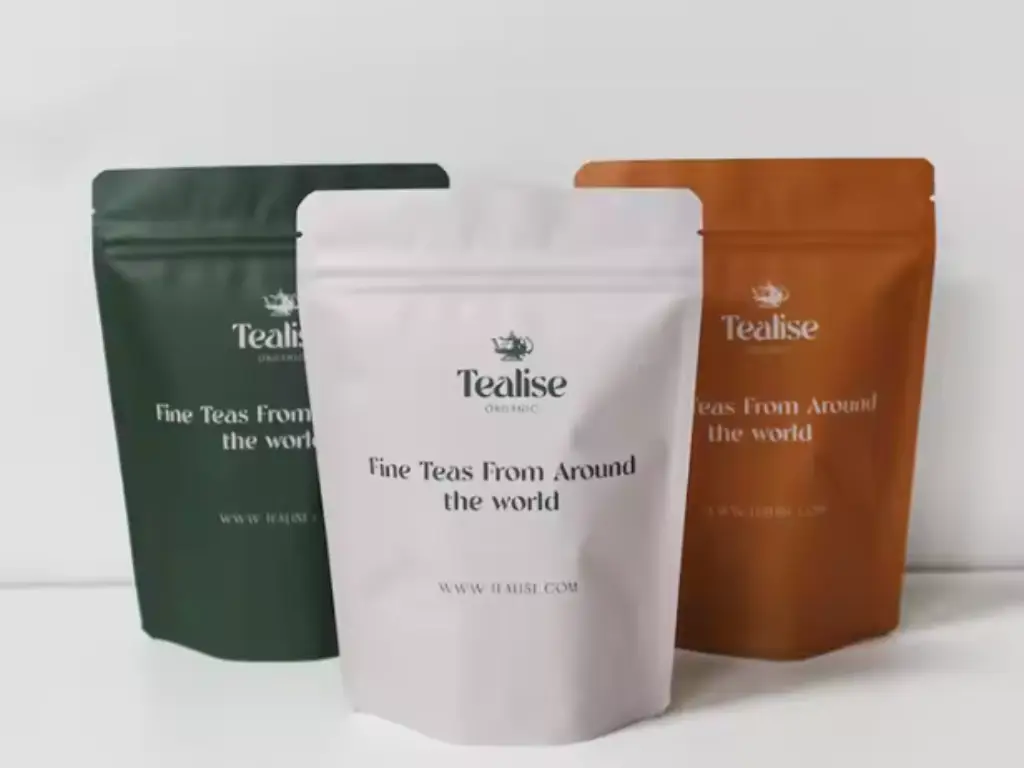
Zipper pouches form one of the most popular flexible packaging formats, which are appreciated due to their resealability and protection of products, as well as their convenience to the consumer. They are commonly used to preserve food, snacks, pet food, and beauty products and keep them fresher and minimize wastage once opened.
The most important one is the zipper lock that is integrated and can be opened and closed again and again without breaking the seal. This helps in increased shelf life and the absence of separate storage containers. Zipper closures can be used on different types of pouches, such as stand-up, flat bottom, and three-side seal.
When considered in terms of branding and sustainability, zipper pouches are not only large enough to work with design-wise, but also may have environmental advantages. Reusability reduces the amount of waste produced by single-use items, and a significant number of versions are being made out of recyclable materials. Zipper pouches will have the added utility of being lightweight, space-saving, and beneficial to the logistical demands and consumer satisfaction of a wide product line.
Specialty Punch Pouches (D-Punch / Euro Punch / V-Notch)

Specialty punch pouches are flexible packaging with some convenient die-cut attributes (such as D-Punch, Euro Punch, or V-Notch). Such additions are usually used on the format of flat pouches or zipper pouches to enhance display, usability, and consumer experience without altering the core material of the pouch.
Euro Punch and D-Punch are hole punches in the center of the top of the pouch, to be hung on retail hooks or pegboards. This enhances shelf visibility and enables brands to use vertical retail space more efficiently, particularly in small-format items such as snacks, supplements, and personal care.
V-Notch, however, is a tear-assist device that can be easily opened without any tools. It is commonly applied to single-use sachets or ready-to-go items, which gives convenience without causing a major hike in the cost of production. Collectively, the features make specialty punch pouches a clever design decision in any category and improve functionality and marketability.
Kraft Paper Pouches
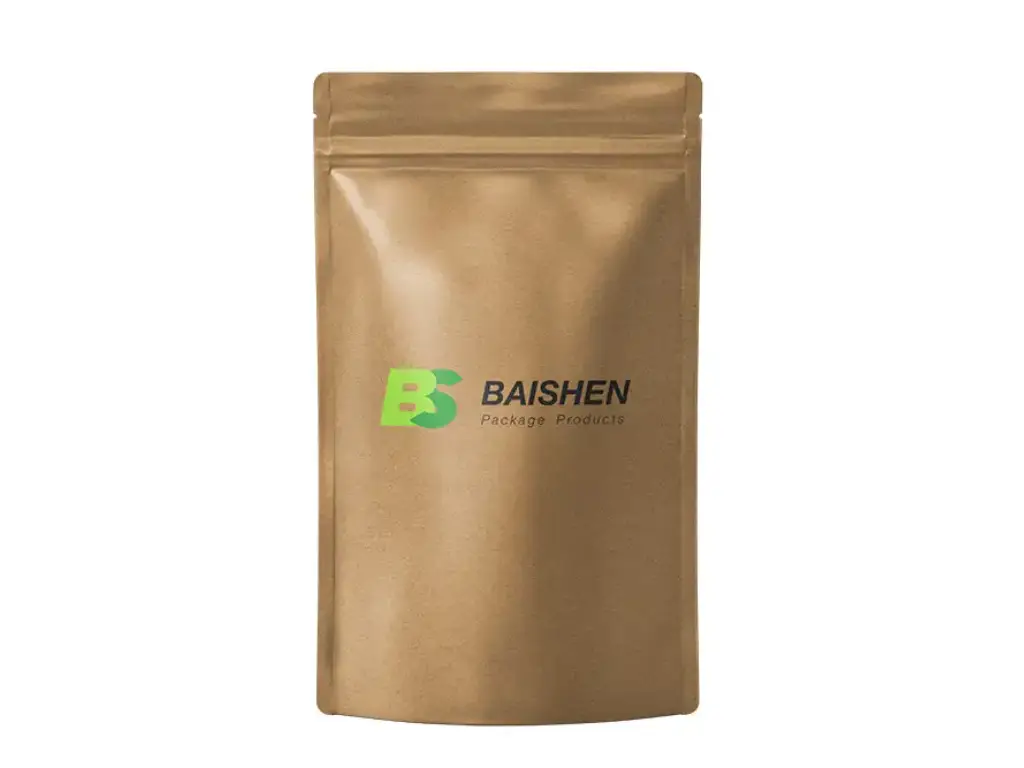
Kraft paper pouches are also a common option that brands turn to when they need to have a visually natural packaging that is also sustainable. They are used extensively in food and personal care as well as pet care, as they are both uncoated and matte, conveying eco-ethics, and can fit into minimalist branding.
These pouches are usually multi-layered in structure with kraft paper and barrier films or foil. This guarantees sufficient moisture and oxygen barriers, which promote product freshness in dry products such as coffee, grains, and snacks. The usability and shelf presence are improved by resealable zippers, heat seals, and optional clear windows.
Kraft paper pouches are available in a variety of formats, such as stand-up, flat bottom, and side gusseted styles, and provide efficiency and flexibility in packaging as well as marketing. They are also lightweight and compact, and this can lower the costs of storage and transportation, and their recyclable or compostable parts can contribute to environmental objectives.
Mylar Bags
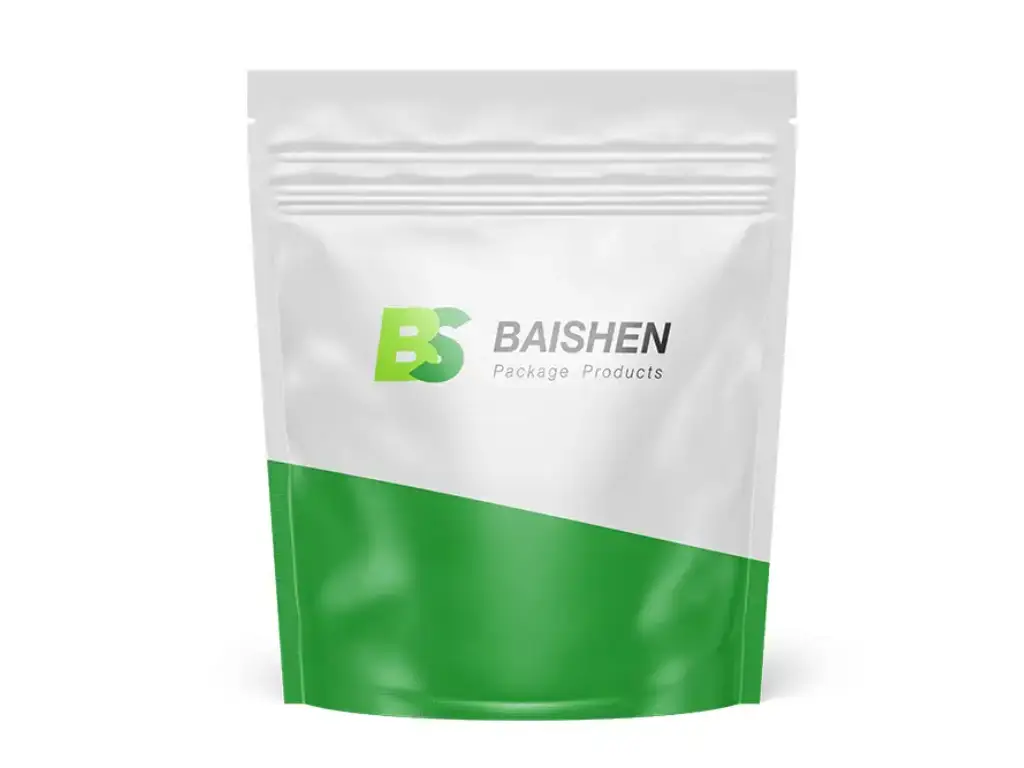
Mylar bags are produced out of biaxially-oriented polyethylene terephthalate (BOPET), which is characterized by high barrier and stiffness properties. These pouches are widely used in the food, supplement, pharmaceutical, and electronic industries, where they can be used to preserve food and other products by keeping moisture, oxygen, and light away, which increases shelf life dramatically.
They can be heat-sealed to give an airtight closure and can have resealable zippers. They are opaque and are thus suitable for UV-sensitive products such as coffee, herbs, and dried foods. They are also applicable in long-term storage, such as emergency kits, when used with oxygen absorbers.
Mylar bags come in many types, including flat, stand-up, or bottom-gusseted, and may be printed to customize branding. Multi-layered and more difficult to recycle, traditionally, but more sustainable versions that use recyclable or mono-material films are appearing to achieve environmental requirements.
| Pouch Type | Structural Features | Common Applications | Resealable | Cost Level | Shelf Appeal |
| Stand Up Pouch | Bottom gusset expands to stand upright | Snacks, supplements, sauces, drinks | Yes | Medium | ⭐⭐⭐⭐ |
| Side Gusseted Pouch | Side panels expand for more volume | Coffee, pet food, powders | Yes | Low | ⭐⭐⭐ |
| Flat Bottom Pouch | Flat base with five printable panels | Coffee, granola, premium food | Yes | High | ⭐⭐⭐⭐⭐ |
| Spouted Pouch | Built-in spout for pourable products | Juices, baby food, and shampoo | Yes | Medium | ⭐⭐⭐⭐ |
| Vacuum Pouch | Air is removed for maximum preservation | Meat, seafood, pharma, electronics | No | Medium | ⭐⭐ |
| Pillow Pouch | Simple back and top/bottom seals | Chips, powders, single-use snacks | No | Low | ⭐⭐ |
| Three Side Seal | Three sides sealed, one open for filling | Cosmetics, pharma, sample packs | Optional | Low | ⭐⭐⭐ |
| Quad Seal Pouch | Four vertical seals form a box shape | Bulk snacks, pet food, and coffee | Yes | Medium | ⭐⭐⭐⭐ |
| Center Seal Pouch | Vertical back seam, clean front | Instant drinks, snacks, powders | No | Low | ⭐⭐⭐ |
| Shape-Cut Pouch | Custom die-cut silhouettes | Children’s snacks, beauty promos | Optional | High | ⭐⭐⭐⭐⭐ |
| Zipper Pouch | Any pouch format with a resealable zipper | Nuts, coffee, and personal care | Yes | Medium | ⭐⭐⭐⭐ |
| Punch Pouch | D-punch / Euro-punch / V-notch for hanging or tearing | Sample packs, snacks, and accessories | Optional | Low | ⭐⭐⭐ |
| Kraft Paper Pouch | Paper-based surface, often with barrier film inside | Organic foods, pet goods, and dry snacks | Yes | Medium | ⭐⭐⭐⭐ |
| Mylar Bag | High-barrier film for long shelf life | Herbs, supplements, emergency kits | Yes | Medium | ⭐⭐⭐ |
How to Choose the Right Type of Pouch for Your Product
Choosing the right kind of pouch packaging is not only about the looks; it is a technical analysis of the physical aspect of the product, market requirements, and logistical issues. The knowledge of the interactions between these factors will assist in determining which pouch format is most effective and sustainable.
Understand Your Product’s Characteristics
The type of pouch that best suits your product is directly dependent on the nature of the product you are selling, be it liquid, powder, or solid. Spout pouches or vacuum pouches are beneficial to liquid products as they provide high-level seals and moisture protection. Dry products such as snacks, grains, or pet food generally fit the flat bottom, pillow pouches, or side gusseted shapes. In case of products that require high barrier protection, like those found in the food industry or pharmaceutical products, the choices are retort pouches, metal foil laminates, or Mylar bags that guarantee a longer shelf life and freshness of the products.
Evaluate Storage, Distribution, and Shelf Presence
Evaluating the types of pouch packaging, one should keep in mind the whole supply chain. Pouches like quad seal, bottom gusseted, or side seal pouches are very good in form stability and space utilization in transportation and on the shelves in the stores. The materials also have to resist certain storage conditions; some plastic films or metal foils are more suited to temperature-sensitive or humid conditions and therefore are suited to refrigerated or export products.
Align Packaging with Brand Identity
The design of a package is important in the perception of the consumer. Formats such as stand-up pouches, shaped pouches, and flat-bottom pouches have the best surface area to apply brands, labels, and clear windows. Without making the product more complicated, the top of the pouch, where such functions as zipper locks or resealable options are located, can contribute to a better user experience and indicate the quality of the product.
Consider User Habits and Convenience
The most perfect packaging is that which predicts the behavior of the consumer. Zipper pouches with resealable zippers are useful in products that the consumer will want to use repeatedly, e.g., pet food packaging or coffee. With single-use items, such as snack items, pillow pouches, or three-side seal pouches, are efficient and have minimal waste. Specialty punch pouches (e.g., Euro Punch, D-Punch) may be needed to present products on hanging racks, and kraft paper formats are especially suitable for brands that focus on sustainability in their packaging.
Balance Price Vs. Environmental and Operational Efficiency
Although rigid packaging can be durable, the flexible packaging pouch is beneficial in terms of cost, storage, and sustainability. Flexible packaging solutions are generally lighter, occupy less space, and lower the carbon footprint in general. Even in more advanced options like mono-material or compostable laminates, it is long-term profitable to many businesses to reduce shipping costs, and the consumer preference for responsible packaging.
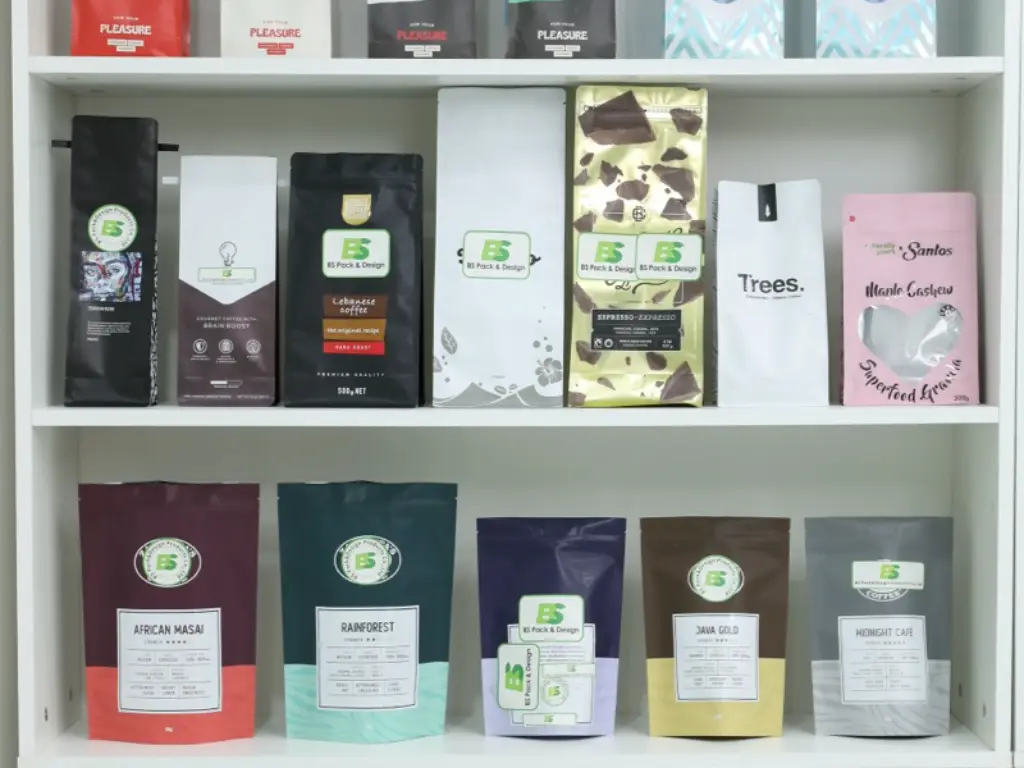
Emerging Trends in Pouch Packaging
The structural changes in the flexible packaging industry are immense as the brands are responding to the environmental directive, changes in technology, and consumer preferences in various industries such as the food industry, pet food industry, pharmaceutical industry, and beauty products.
- ● Sustainability and Material Innovation
The demand for environmentally friendly packaging is motivating manufacturers to change towards biodegradable kraft paper, mono-material films, and thinner plastic layers that consume fewer resources and have a lower carbon footprint but do not compromise functionality. Formats like flat bottom pouches, side gusseted, and bottom gusseted pouches are also being made more recyclable and use fewer materials.
- ● Integration of Smart Features
Pouch designs are incorporating interactive packaging technologies, including QR codes, NFC tags, spoilage indicators, etc, especially in food packaging and pharmaceutical products. These characteristics increase traceability, consumer confidence, and real-time access to product information, prepping the way to a smarter, more transparent supply chain.
- ● Functionality and User-Centric Design
The innovation in resealable zippers, zipper locks, spout pouches, and shaped pouch designs that facilitate portability, hygiene, and long shelf life is driven by consumers’ desire to have convenience. The enhanced usability and aesthetic appearances are taking center stage in the packaging design approach in both liquid and dry commodities.
- ● Short-Run Production and Customization
Digital printing and automation have now made it possible to have small-run, highly customized pouch packaging-including specialty punch options such as Euro Punch and V-Notch-and make quick product launches and seasonal offerings with minimal inventory risk and waste.
- ● Expansion Across Industry Segments
Non-food applications are growing in the non-food industries, including household cleaners, personal care, and industrial fluids. The cost-effective production, space-saving, and low shipping weight are advantages of these applications that lead to further innovative developments in sealing performance and product compatibility.
Conclusion: Packaging That Protects and Sells
The appropriate packaging is more than a container that holds your product; it maintains quality, enhances shelf appeal, reduces logistic expenses, and promotes sustainability. Now that there are more varieties of pouches in the market than ever before, zipper pouches, vacuum, and spout pouches, among others, it is even more critical to make an informed decision. In food packaging, pet food, beauty, and pharmaceutical products, the correct flexible packaging can put your brand ahead. It is high time to consider your present packaging and pose a question: Does it protect, promote, and match your values? Otherwise, it is time to change. Choose smart. Choose flexibility. Choose the pouch that is as hardworking as your product.

Baishen Pack: Your Trusted Partner in Premium Flexible Packaging
Since 2012, Baishen Pack has empowered global brands with high-quality custom flexible packaging. We specialize in food-grade, FDA/SGS/ISO certified materials, ensuring product safety and compliance. Leveraging advanced HP Indigo digital printing, we achieve up to 97% PANTONE® color matching for stunning shelf appeal. Our industry-leading turnaround delivers digital print orders in just 7-10 business days – significantly faster than competitors. With flexible MOQs starting at 500 units, we support all scales. Our rigorous in-house QC, including comprehensive barrier and durability tests, guarantees superior moisture, oxygen, and puncture resistance. Choose Baishen Pack for ultimate product protection, extended shelf life, and a decisive market advantage.
Frequently Asked Questions about Pouch Packaging
A stand-up pouch has a rounded or oval-shaped bottom in order to stand up when filled and flat bottom pouch has a reinforced flat bottom to provide better stability. Flat bottom pouches are generally more voluminous internally and have a high-end appearance, which is why they are suitable to use with high-end products or products that need good shelf presence.
The most appropriate type of pouches with liquids such as juices, sauces, or detergents is spouted pouches. Their inbuilt nozzles enable them to be poured and resealed in a controlled manner hence easy to use and leakproof.
The modern pouches are made with the idea of sustainability. There is recyclable laminates, biodegradable films and minimized-material formats. Nevertheless, the environment is affected by the materials applied, the possibilities of recycling, and the correct disposal.
Indeed, nearly every type of pouch can be custom printed through the use of digital, flexographic or rotogravure printing. Stand up, flat bottom, and gusseted pouches have large surfaces that are suitable to put attention grabbing patterns and brand messages.
Pillow pouches and three-side seal pouches are generally the least expensive because of their basic design and less usage of materials. They are suitable in snacks, powders and one-time objects.
Mylar bags provide excellent barriers to light, oxygen and moisture, and are the perfect choice in storing food long term. More sustainable and with the image of a natural, organic brand, kraft paper pouches can be used and may need inner linings to achieve barrier properties.
Coffee is normally packaged in side gusseted or quad seal pouches since they offer good barrier protection and keep products fresh. Preservation of flavor can also be done by adding a one-way degassing valve that releases CO 2 but does not allow air to enter.
A certain part of pouches can be recycled, particularly mono-material (such as all-PE or all-PP structure). Others are reusable with such features as zipper seals. Never forget to read the local recycling laws and use eco-certified materials whenever possible.

